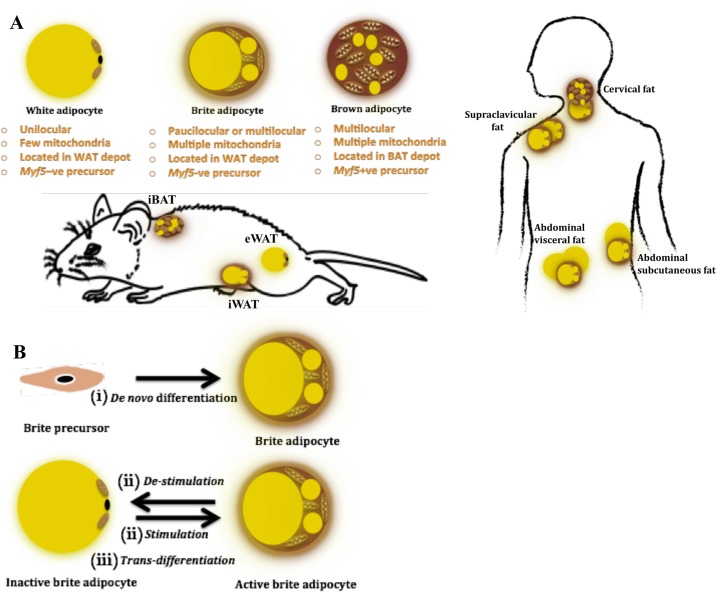Fig. 2.
A: characteristics, origin, and location of brown, brite, and white adipocytes in mice and men. Adipocytes can be white, brown, or brite in nature. Location-wise, deep neck biopsies from the cervical region have been reported to express classic brown markers (93, 106), whereas most studies dealing with human supraclavicular fat report a beige fat signature in this depot (46, 74, 140, 142, 175). In addition, evidence exists for abdominal visceral and subcutaneous fat depots to undergo browning in humans (54, 144). In mice, interscapular brown adipose tissue (BAT) represents the most commonly studied classic BAT depot, whereas, based on the extent of browning, inguinal white adipose tissue (iWAT) often represents a beige fat depot, and epidydmal white adipose tissue (eWAT) is considered to be a true WAT depot (129, 138, 166, 169). B: proposed mechanisms of brite adipocyte origin. Brite adipocytes have been proposed to originate either from i) specific precursors via de novo differentiation (171); ii) mature white-looking brite adipocytes upon stimulation (129); or iii) from mature white adipocytes via transdifferentiation (37).

